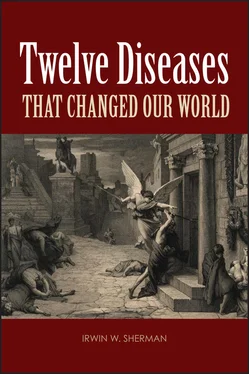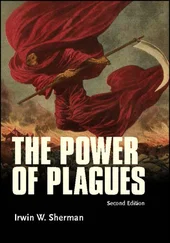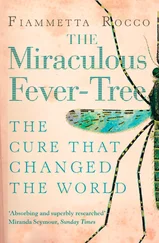The attitude toward the Irish was described by one English writer: “Ireland is a little island at the edge of Europe with a Stone Age culture . . . its inhabitants wild, feckless, and charming or morose, repressed, and corrupt, but not especially civilized.” Benjamin Disraeli, the beloved Prime Minister of Queen Victoria, had a stronger opinion: “The Irish hate our order, our civilization, our enterprising industry, our pure religion.” Britain maintained Ireland as an agricultural colony and prevented manufacture of anything the British produced; Irish culture was suppressed save for music and dance. The British colonization of Ireland introduced a tenure system that gave Protestant landlords control of 95% of the land.
The landlords (most of whom were absentees) subdivided their land into 5-acre lots that were rented to estate agents. These lots, in turn, after being subdivided into smaller ones, could then be rented again at higher rates. At the base of this economy were 3 million tenant farmers who might have one quarter of an acre of land. On this small plot, the tenant farmer and his family cultivated a small garden and lived in a tiny one-room mud cottage with neither floor nor windows, only a door and a hole in the thatched roof to let out the smoke from the turf fire. On average, there were 10 people per cabin, which they shared with the family pig. The tenant farmers had another 5 acres that were used for growing cash crops such as wheat, oats, and barley.
The potato, introduced into Europe by the mid-18th century, was never a cash crop; however, because it was better adapted to the cool, moist conditions in Ireland than other crops, most of the Irish population was dependent on it as a supplemental food source by 1800. The Irish tenant farmers were forced to pay exorbitant taxes and to export their cash crops as well as butter, eggs, pork, and beef in order to produce sufficient income to pay the landlords for the use of the land and to avoid eviction. Some of those evicted were relocated to less fertile areas where essentially only the potato could be grown, but even these lands remained under the control of absentee British landlords. The Irish peasants on the worst land came to rely almost exclusively on potatoes to store over the winter and to feed themselves and their livestock, especially the pigs. The potato became the staff of life for the Irish peasant. A family of 10 needed a ton of potatoes per month to survive, and an average adult ate 9 to 14 pounds per day supplemented with buttermilk.
In 1845 a “queer mist” came over the Irish Sea and the potato stalks turned black as soot. The next day the potatoes were a wide waste of putrefaction, giving off an odor that could be smelled for miles. About 40% of the potato crop was destroyed. In areas where the blight was most severe, tenant farmers and their families frantically scoured the land and bogs for stray potatoes. They washed away the rotted parts and grated the remainder to make flour. Children searched the woods for nuts and berries; they dug for fern and dandelion roots and ate the leaves and bark from the trees. The streams were fished for eels and trout, and the peasants trudged many miles to get to the shore, where they scraped mussels, limpets, and seaweed from the rocks. Many died from eating poisonous plants, but “The Great Hunger” forced them to try anything that seemed edible.
When the fourth rider of the Apocalypse, Famine, rode into Ireland, the Victorian historian Charles Kingsley described what he saw: “I am daunted by the human chimpanzees I saw along that 100 miles of horrible country. I don’t believe they are our fault. I believe that there are not only many more of them than of old, but that they are happier, better and more comfortably fed and lodged under our rule than they ever were.” As the Great Famine gripped Ireland, thousands of Irish died each day. Few were felled from starvation alone: death invariably was visited upon the Irish because malnutrition made them more susceptible to diseases such as typhus, cholera, dysentery, and relapsing fever. Desperate to escape from virulent racism and prejudice, as well as starvation caused by the potato failure, the people of Ireland began a process of migration that changed the course of their history and that of Canada, the United States, and Great Britain.
Many of the great civilizations of the world were established by people who settled down and cultivated a staple food crop. In Southeast Asia it was rice, in Europe it was grain (wheat and rye), and for the Mayans and Aztecs in Central America and Mexico it was corn. The South American Incas cultivated a plant that grew well above the 10,000-ft level in the high valleys and cold plateaus of the Andes mountains. This plant had stems above and below ground level, and the swollen underground stems—called tubers—were highly nutritious. These tubers, which the Incas called “papas,” we call potatoes. The potato tuber is nutritious because it contains proteins, starches, and vitamins. The potato was the staple food source on which the Inca civilization was built, and even today it is one of the most important food crop plants in the world. Although rice, maize (corn), and wheat are the top three food plants, the potato ranks fourth. Indeed, one-fifth of the world’s people use the potato as their primary food source today.
The Incas first cultivated the potato over 6,000 years ago. When the Spanish Conquistadors under Pizarro came to the Americas in search of treasure, they destroyed the Inca civilization but discovered something more valuable than gold, silver, and jewels—the potato plant. This plant, perhaps the most priceless possession of the Incas, the Conquistadors did not even bother to record. By the late 1500s the sailors on Spanish galleons accidentally introduced these plants into Europe, where they were considered more of a curiosity than a foodstuff. They may have been rejected as a food because the potato is a member of the poisonous nightshade family. It was also claimed to cause leprosy, and even its reputation as an aphrodisiac did not make it acceptable. (The seductive Marie Antoinette, it is claimed, wore potato blossoms in her hair.) It was widely believed that eating potatoes caused flatulence, and so initially the tubers were fed to farm animals; however, since this caused no harm, the potato came to be accepted as a food fit for humans. By the 1800s, with an increase in the population of Europe and the inability of grains to support this population, the potato became a regular part of the diet. Easy cultivation and high yields in cool climates led to a major dependence on potatoes by populations on the high cold plateaus of Spain, the dank flatlands of Germany and Poland, and the soggy bogs of Ireland. The British landowners encouraged cultivation of the potato in Ireland since it saved the grain for export and for their own use. Furthermore, only in the southeastern part of Ireland is the soil suitable for growing grain (rye or wheat) from which bread can be made, but potatoes can be grown even in the poorest soils.
The Irish invented a highly efficient method of potato cultivation, called the “lazy bed.” The lazy bed is one in which the seed potatoes (“eyes” of the tuber) are placed helter skelter on the ground and covered with manure and seaweed, and then the soil dug from lateral trenches is piled on top so that long, narrow beds of soil are raised 2 to 3 ft above the surrounding ground. This protects the tubers from excess moisture. The cultivation of potatoes produces a high-yield crop (~30 tons/acre). Potato plants mature faster than most crops, taking 90 to 120 days, and edible tubers can be harvested in 60 days. The potato tuber is higher in protein than soybean, and half a potato can provide half of the human daily requirement of vitamin C.
Читать дальше











